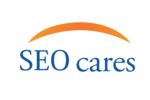Google Ads can be a powerful tool for interior design businesses looking to attract new clients and grow their brand.
By strategically targeting the right audience and crafting compelling ads, interior designers can increase visibility and drive more leads.
We’ll show you how to leverage Google Ads to effectively promote your interior design services and differentiate your business in a competitive market.
Using Google Ads for an interior design business can help attract potential clients looking for design services.
Here’s how to leverage Google Ads effectively:
Set Clear Campaign Goals:
When using Google Ads for your interior design business, setting clear campaign goals is essential to achieving success.
Start by defining what you want to accomplish, whether it’s increasing website traffic, generating leads, or promoting specific services like home makeovers or office designs.
Clear goals help guide your ad strategy and make it easier to track performance.
For example, if your goal is to generate more leads, focus on targeting keywords related to “interior design consultations” or “custom home designs.”
If increasing brand awareness is the aim, target broader keywords like “interior design ideas” or “modern home design.”
Establishing measurable goals, such as achieving a specific number of clicks, conversions, or return on investment (ROI), allows you to assess the effectiveness of your campaigns.
Regularly review your campaign performance to refine your goals and ensure you’re getting the best results from your Google Ads efforts.

Target Relevant Keywords:
Targeting the right keywords is crucial when using Google Ads for your interior design business.
Start by identifying keywords that potential clients are likely to search for, such as “interior design services,” “home decorating ideas,” or “office design experts.”
Focus on terms that reflect what you offer and match user intent, whether they’re looking for inspiration or ready to hire a professional.
Use Google’s Keyword Planner tool to research keyword volume, competition, and cost-per-click (CPC) to find the best options for your budget.
Long-tail keywords like “modern living room design” or “affordable interior designer in [city]” can also help target more specific customer needs and reduce ad spend.
You should also use negative keywords to prevent attracting irrelevant traffic. For instance, if you don’t provide DIY design services, exclude terms like “DIY home decor” from your campaigns.
By targeting the right keywords, you’ll attract high-quality leads and make your ads more effective.
Create Compelling Ad Copy:
Creating compelling ad copy is key to attracting potential clients for your interior design services.
Begin by creating a clear and concise message that emphasizes the unique value your business offers.
Focus on what sets you apart, such as personalized designs, years of experience, or expertise in a specific style (e.g., modern, minimalist, or eco-friendly interiors).
Your headline should grab attention, and the description should emphasize benefits. For example, use phrases like “Transform Your Space Today” or “Expert Interior Design for Every Budget” to create urgency and appeal.
Incorporate a compelling call-to-action (CTA), like “Get a Free Consultation” or “Book Your Design Consultation Today.”
Use ad extensions like sitelinks or call extensions to make it easy for users to learn more or contact you directly.
Ensure your ad copy is aligned with the keywords you’re targeting, so potential clients find exactly what they’re searching for.

Optimize Landing Pages:
Optimizing your landing pages is essential to converting clicks into clients when using Google Ads for interior design.
Ensure that your landing page is relevant to the ad and offers a seamless user experience.
If your ad promotes home design services, the landing page should focus on that specific service, with clear, targeted content.
Your landing page should load quickly, be mobile-friendly, and have easy navigation. Include high-quality images of your work, client testimonials, and detailed information about the services you offer.
Make sure the page has a clear call-to-action (CTA), such as “Get a Free Consultation” or “Request a Quote,” to guide visitors toward taking the next step.
Additionally, align your landing page content with the keywords and ad copy. Consistency between your ads and landing pages will improve your Quality Score in Google Ads, helping lower costs and increase ad visibility.
Regularly test and update your landing pages to maximize conversions.
Use Ad Extensions:
Ad extensions are a powerful tool in Google Ads that can enhance your interior design campaigns and make your ads stand out.
By using ad extensions, you can provide additional information to potential clients, making it easier for them to connect with your business.
Start by adding call extensions, which allow users to call you directly from the ad. This is particularly useful for interior design services, as many clients may want to ask questions or schedule a consultation right away.
Sitelink extensions can also be helpful, directing users to specific pages on your website, such as portfolios, services, or client testimonials.
Additionally, consider using location extensions to show your business address, especially if you focus on local clients.
Callout extensions allow you to highlight key features, such as “Free consultations” or “Custom designs.”
By adding these extensions, you can increase your ad’s visibility, improve click-through rates, and drive more qualified leads.
Target Specific Audiences:
Targeting the right audience is crucial for the success of your Google Ads campaigns in interior design.
To reach the most relevant clients, use Google’s audience targeting features.
Start by focusing on demographics, such as age, income, and homeownership status, to ensure your ads reach individuals likely to need interior design services.
You can also target specific interests related to home improvement, remodeling, or interior decorating. This helps attract users who are actively seeking inspiration or professional services.
Additionally, use custom intent audiences to target people who’ve recently searched for terms like “home redesign” or “interior designer near me,” showing they’re ready to hire a professional.
For more refined targeting, use remarketing to re-engage visitors who have already visited your website but didn’t convert.
Targeting the right audience enhances the effectiveness of your ads and helps generate more qualified leads for your interior design business.

Target Local Keywords:
When running Google Ads for your interior design business, targeting local keywords is essential to attract nearby clients.
Focus on location-specific terms like “interior design in [city],” “home decorators in [area],” or “best interior designer near me.”
This helps ensure your ads are shown to people in your service area who are more likely to need your services.
Using local keywords also improves your Quality Score in Google Ads, which can lower your cost-per-click (CPC) and increase ad visibility.
You can further narrow your reach by including neighborhood names or regional terms that relate to your target market.
Additionally, setting up location targeting in Google Ads ensures your ads are only shown to users within your defined area, increasing the chances of generating leads.
By focusing on local keywords, you’ll be able to connect with potential clients who are actively searching for interior design services in your area.

Use Showcase Ads:
Showcase ads are a powerful tool for interior designers to visually present their work and attract potential clients.
These ads allow you to display multiple images of your design projects, creating an engaging, visual experience that highlights your skills and style.
Showcase ads are ideal for promoting portfolios or specific services, such as living room renovations or kitchen redesigns.
To use showcase ads effectively, choose high-quality images that reflect your design expertise.
Feature a variety of projects to showcase different styles, such as modern, rustic, or minimalist. Ensure the images are aligned with the keywords you’re targeting to reach the right audience.
Showcase ads appear in Google’s Shopping tab, making it easy for users to browse through your portfolio.
By using this format, you can attract users who are looking for design inspiration and increase the likelihood of converting them into leads.

Leverage Seasonal Campaigns:
Seasonal campaigns are a great way to capitalize on specific times of the year when clients may be looking to update their interiors.
For example, during the spring, people often want to refresh their homes, while the holiday season might inspire clients to redecorate for family gatherings.
By aligning your Google Ads with seasonal trends, you can target customers when they are most likely to need interior design services.
To leverage seasonal campaigns, use keywords relevant to the season, like “spring home makeover” or “holiday home design.”
Highlight specific services or promotions in your ad copy, such as “Get Your Home Ready for the Holidays” or “Spring Into a Fresh Home Design.”
Ensure that your landing pages reflect the seasonal theme to maintain consistency and improve conversion rates.
By timing your campaigns around key seasons, you can attract clients who are eager to refresh their homes, boosting your chances of generating new business.
Focus on Niche Markets:
Focusing on niche markets in your Google Ads campaigns can help your interior design business stand out and attract clients looking for specialized services.
Rather than targeting broad terms like “interior design,” focus on more specific needs or styles, such as “eco-friendly interior design,” “small apartment decorating,” or “luxury home design.”
By narrowing your target audience, you can create highly relevant ads that speak directly to their unique needs, increasing the likelihood of conversions.
For example, if you specialize in designing sustainable homes, use keywords like “green interior design” or “eco-friendly home decor” to attract environmentally conscious clients.
Additionally, targeting niche markets allows you to face less competition, leading to more cost-effective campaigns.
Tailor your ad copy and landing pages to highlight your expertise in the specific niche, ensuring that your potential clients feel confident in your ability to meet their unique design needs.

Use Google My Business:
Google My Business (GMB) is a powerful tool for interior designers looking to enhance their Google Ads campaigns.
By creating and optimizing a GMB profile, you can improve your local search visibility and make it easier for potential clients to find your services.
When you link your GMB account to Google Ads, you can show your business location, hours, and reviews directly in your ads, boosting credibility and trust.
Ensure your GMB profile is complete, with accurate information such as your business name, address, phone number, and website.
Add high-quality photos of your design projects and ask satisfied clients to leave positive reviews.
This can help attract clients who are specifically searching for interior designers in your area.
Additionally, using location targeting in Google Ads will further enhance your local visibility.
Google My Business can be a key factor in driving foot traffic, phone inquiries, and online consultations for your interior design business.
Remarketing:
Remarketing is a powerful strategy to re-engage potential clients who have previously visited your website but didn’t take action, such as requesting a consultation or booking a service.
With Google Ads, you can create custom remarketing campaigns that target these users as they browse other websites or use Google search.
To use remarketing effectively, first set up a remarketing list in Google Ads by placing a tracking tag on your website.
This will allow you to create ads that specifically target people who have shown interest in your interior design services.
For example, if a visitor browsed your portfolio page but didn’t contact you, you can show them ads featuring your best projects or limited-time offers.
Remarketing helps remind potential clients of your services, encouraging them to return and complete the desired action.
It’s a cost-effective way to increase conversions and maximize the ROI of your Google Ads campaigns.

Optimize for Mobile:
With more people searching for services on mobile devices, optimizing your Google Ads campaigns for mobile is crucial for interior design businesses.
First, ensure that your ads are mobile-friendly by creating clear, concise ad copy that grabs attention and includes strong calls-to-action, such as “Book a Free Consultation” or “Get Your Design Quote Now.”
Additionally, your landing pages should be optimized for mobile users. Ensure fast loading times, easy navigation, and mobile-responsive design so users can quickly learn about your services or contact you directly.
Avoid clutter and focus on essential information like your portfolio, testimonials, and a simple contact form.
Google Ads allows you to set mobile-specific bids, so consider increasing your budget for mobile devices if you see strong performance.
By optimizing for mobile, you can reach a broader audience, improve user experience, and increase conversion rates for your interior design business.

Track Results and Refine:
Tracking results and refining your Google Ads campaigns is essential to ensure that your interior design business is getting the best return on investment (ROI).
Start by monitoring key metrics such as clicks, impressions, conversions, and cost-per-conversion.
Use Google Ads’ built-in tracking tools to measure the performance of your ads, keywords, and landing pages.
If some ads or keywords aren’t performing well, modify your targeting, ad copy, or bidding approach.
For example, you might notice that ads with specific services like “luxury home design” are generating more leads, so you can allocate more budget toward those keywords.
You can also use Google Analytics to get deeper insights into user behavior on your website, such as time spent on pages or bounce rates.
Regularly update your campaigns based on this data to boost performance. Ongoing adjustments and testing will help you maximize the impact of your Google Ads for your interior design business.
Wrap up:
Using Google Ads for your interior design business can help you reach more people and get the right clients.
By targeting the right audience, creating attractive ads, and improving your campaigns, you can build a strong online presence and stand out from the competition.
Start using these strategies today, and watch your interior design business grow.
Most asked questions:
Can I advertise myself as an interior designer?
To advertise yourself as an interior designer, start by building an online presence. Build a professional website that highlights your portfolio, client reviews, and services.
Utilize social media platforms like Instagram and Pinterest, where you can share photos of your work.
You can also join online directories for interior designers and engage with local communities.
Additionally, investing in Google Ads or Facebook Ads can help you target potential clients in your area.
Is $5 a day enough for Google Ads?
A $5 daily budget for Google Ads can work, but its effectiveness depends on several factors such as your competition, keywords, and the market you’re targeting.
For local services like interior design, a $5 budget may be enough to get started and test ads, but you might need to increase it to get significant results.
Regularly monitor your campaigns and adjust your budget for better performance.
Does Google have interior designers?
Google itself doesn’t employ interior designers, but it offers a platform where interior designers can advertise their services.
Through Google My Business, interior designers can create a business profile, making it easier for potential clients to find them.
Additionally, Google Ads allows interior designers to target specific keywords and regions to promote their services to a wider audience.
How to use Google Ads for moving companies?
To use Google Ads for a moving company, target local customers by bidding on relevant keywords like “moving services” and “movers near me.”
Create compelling ads highlighting your services and use location targeting to reach your service area.
Set a budget,track performance and make adjustments as necessary to generate leads and increase bookings.
How to Use Google Ads for Moving Companies?
To use Google Ads for a moving company, target location-specific keywords like “movers in [city]” and create clear, compelling ads.
Include your phone number and location through ad extensions, and optimize your landing page with service details and contact info. Monitor and refine your campaigns to maximize results.
How Much Do Google Ads Cost?
Google Ads costs vary based on competition and targeting. On average, cost-per-click (CPC) can range from $1 to $10 or more, depending on your industry. You can set a daily budget to manage your spending.
Do Google Ads Really Pay?
Yes, Google Ads can provide a good return on investment if used correctly. Targeting the right audience, creating compelling ads, and optimizing your campaigns can drive leads and sales, but continuous tracking and refinement are key.

![In today's competitive healthcare landscape, reaching the right patients at the right time is essential for growing your medical practice. Google Ads offers a powerful way to connect with individuals actively searching for healthcare services in your area. Whether you're a family physician, specialist, or running a multi-provider clinic, Google Ads can help you increase visibility, attract new patients, and build trust within your community. This guide will explore how to maximize the potential of Google Ads to grow your medical practice effectively. How to Use Google Ads for Your Medical Practice Define Your Goals Before starting a Google Ads campaign for your medical practice, it’s essential to define your goals clearly. Knowing your goals will shape your strategy and help you track success effectively. Common goals for medical practices include increasing patient appointments, promoting specific services, enhancing local visibility, or building brand awareness. If your goal is to drive more appointments, focus on targeting keywords like “doctor near me” or “book a medical consultation.” For practices offering specialized services, such as dermatology or physical therapy, emphasize those services in your ad copy and targeting. If building trust and brand awareness is your priority, use display ads to highlight patient reviews, certifications, or facility images. By setting clear goals, you can create campaigns tailored to meet specific objectives. This helps allocate your budget more effectively and ensures you reach the right audience. Regularly track your progress using tools like Google Ads reports and Google Analytics to ensure your goals are being met. Adjust your campaigns as needed to stay aligned with your objectives. A well-defined goal not only improves your campaign's performance but also maximizes the return on investment for your medical practice. Identify Your Target Audience To run a successful Google Ads campaign for your medical practice, it’s crucial to identify your target audience. Identifying your target audience ensures your ads reach the right people at the right time, maximizing your ROI. Start by considering the demographics of your ideal patients. Are they families, working professionals, or seniors? What is their location? For example, a pediatrician might target parents in local neighborhoods, while a specialist may focus on patients within a wider area. Use geographic targeting in Google Ads to reach people near your practice or in specific regions where you want to attract patients. Next, think about their needs. Are they searching for routine checkups, specialized treatments, or urgent care? Use keywords like “family doctor near me” or “orthopedic specialist” to align your ads with their search intent. Behavioral targeting can also help you reach users based on their online activity, such as searching for health services. Additionally, consider language and cultural preferences if your practice serves a diverse community. Creating personalized ads for specific groups can improve engagement. By identifying your target audience, you can design highly relevant campaigns that attract the right patients, drive appointments, and grow your medical practice. Choose Relevant Keywords Selecting the right keywords is a critical step in creating a successful Google Ads campaign for your medical practice. Keywords are the terms potential patients use when searching for healthcare services, and targeting the most relevant ones ensures your ads reach the right audience. Start by identifying keywords that match your services and patient needs. For general practices, keywords like “family doctor near me” or “primary care physician” are effective. If you offer specialized services, include specific keywords such as “pediatrician,” “cardiologist in [city],” or “physical therapy clinic.” Use Google’s Keyword Planner to find high-traffic, low-competition keywords and boost your campaign's performance. Don’t forget to include local keywords, especially if your goal is to attract patients from nearby areas. For example, “dentist in [neighborhood]” or “urgent care near me” can help you connect with local searchers. Incorporate negative keywords to avoid irrelevant traffic. For instance, exclude terms like “free consultation” if you don’t offer free services. Use a combination of broad match, phrase match, and exact match keywords to achieve a balance between reach and accuracy. Continuously monitor keyword performance and adjust as needed to improve results. Choosing the right keywords ensures your ads appear to the right audience, driving more appointments and increasing ROI. Create Location-Based Campaigns For a medical practice, reaching local patients is key to success, and location-based campaigns in Google Ads can help you connect with the right audience nearby. By focusing on specific geographic areas, you can ensure your ads appear to people searching for healthcare services within your service area. Start by using Google Ads' location targeting to define your geographic focus. This could be a specific city, neighborhood, or a certain radius around your practice. For example, a clinic in downtown Los Angeles can target users searching for “family doctor near me” within a 10-mile radius. Location extensions are also helpful for displaying your address, making it easy for potential patients to find you on Google Maps. Include local keywords in your ad copy, such as “trusted dentist in [city]” or “urgent care near [neighborhood].” This keeps your ads relevant to local users. If your practice serves multiple areas, consider creating separate campaigns for each location. Location-based campaigns allow you to focus your budget on the areas where your services are needed most. By targeting local patients and optimizing your ads for location-specific searches, you can attract more qualified leads, increase appointments, and grow your medical practice.](https://www.seocares.com/wp-content/uploads/2024/12/use-16.png)